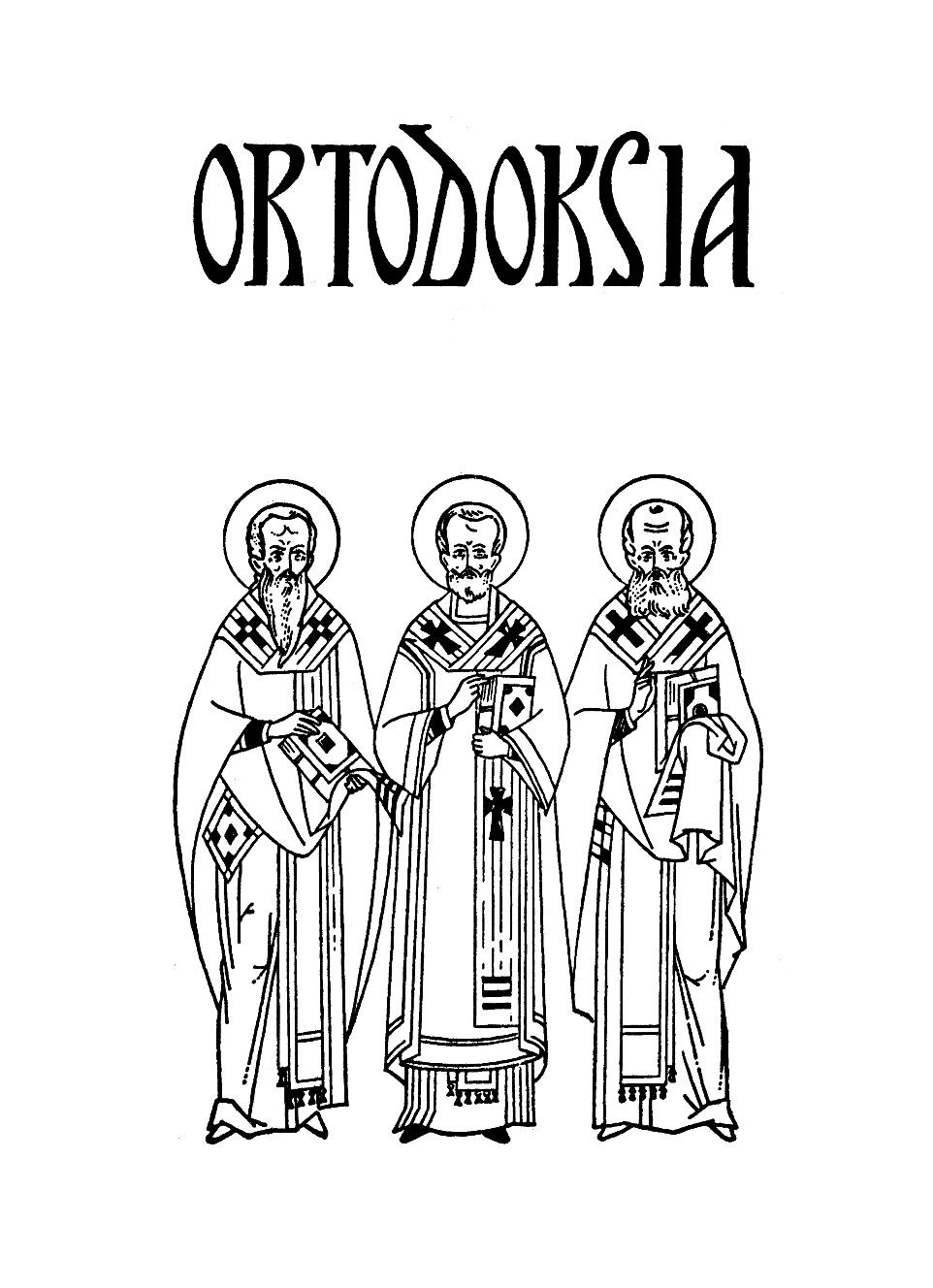The Clergy in the Orthodox Church of Finland in Relation to Canonical Tradition and Canon Law
DOI:
https://doi.org/10.61560/ortodoksia.131888Keywords:
clergy, canons, church legislation, legislationAbstract
The article examines how canonical tradition and Finnish ecclesiastical legislation regulate the status and administrative duties of the Finnish Orthodox clergy. The study is based on the dual basis of the Finnish Orthodox Church: on the one hand, it is determined by the canons of the Orthodox Church and, on the other hand, by Finnish legislation. The relationship between the two is linked to the current debate on the reconciliation of canonical tradition and state legislation. The article shows that the canons and church law in many ways represent different understandings of the administrative position and duties of the clergy.
The canonical tradition is strongly bishop-centred, which is reflected in the diocese-centredness and the position of the episcopal conference as the body exercising the highest power in the local church. Apart from the bishops, the administrative position of the clergy is narrow and parishes are not independent of the diocese.
According to church law, the highest authority in the church rests with the lay-majority Church Council, on which the clergy is largely represented. In addition to the diocesan bishops, lay and clerical representatives participate in the general administration of the Church. The canonical tradition does not recognise the function of the vicar (in Finnish kirkkoherra), who has a central role in the administration of the parish in canon law.
Presumably, the tension between canonical tradition and secular legislation will continue to be accepted, but the administrative reform processes of the Finnish Orthodox Church are seeking ways to reconcile them better than at present.

References
Fyrqvist, Sami (2019). Kanonien soveltaminen papiston kurinpitotoimissa arkkipiispa Paavalin kaudella (1960–1987). Käytännöllisen teologian pro gradu -tutkielma. Itä-Suomen yliopisto. Painamaton.
Hakkarainen, Jarmo (2008). Haavoitettu parantaja. Ortodoksinen pappi sielujen lääkärinä Kristuksessa. Omakustanne.
Heikkilä, Jelisei (2020). Kanonisia havaintoja Suomen ortodoksisen kirkkohallituksen 19.2.2020 tekemän päätöksen edellyttämää[n] asiantuntijaselvitykseen. https://ort.fi/sites/default/files/2020-06/Kanonisia%20havaintoja%20asiantuntijalausuntoon%2C%20Heikkil%C3%A4%20Jelisei.pdf. Katsottu 14.3.2023.
Heith-Stade, David (2014). The Rudder of the Church. A Study of the Theory of Canon Law in the Pedalion. Lund: Media-Tryck.
Ikäheimo, Risto (2020). Kanonisen oikeuden ja yleisen työlainsäädännön rajamailla. Ortodoksia 60. 61–73.
Johannes, metropoliitta (1982a). Suomen ortodoksisen kirkon kanoninen asema. Teoksessa Isä Ambrosius & Markku Haapio (toim.), Ortodoksinen kirkko Suomessa. 3. täydennetty painos. Heinävesi: Valamon luostari, 160–163.
Johannes, metropoliitta (1982b). Periaatteellisia näkökohtia valtiovallan ja ortodoksisen kirkon suhteista. Teoksessa Isä Ambrosius & Markku Haapio (toim.), Ortodoksinen kirkko Suomessa. 3. täydennetty painos. Heinävesi: Valamon luostari, 173–177.
Karjomaa, Niilo (1982). Kirkon järjestysmuoto ja hallintoelimet, seurakuntahallinto. Teoksessa Isä Ambrosius & Markku Haapio (toim.), Ortodoksinen kirkko Suomessa. 3. täydennetty painos. Heinävesi: Valamon luostari, 179–194.
Koukkunen, Heikki (1977). Suomen valtiovalta ja kreikkalaiskatoliset 1881–1897. Diss. Joensuun yliopisto.
Loima, Jyrki (2001). Muukalaisina Suomessa. Kaakkoisen kannaksen kreikkalaiskatoliset venäläisseurakunnat kansallisena ongelmana 1889–1939. Diss. Joensuun yliopisto.
Nokelainen, Mika (2010). Vähemmistövaltiokirkon synty: Ortodoksisen kirkkokunnan ja valtion suhteiden muotoutuminen Suomessa 1917–1922. Helsinki: Suomen kirkkohistoriallinen seura.
Patsavos, Lewis J. (1981). The Status of Canon Law in the Orthodox Church Today. Teoksessa Demetrios J. Constantelos (toim.). Orthodox Theology and Diakonia. Trends and Prospects. Hellenic Brookline: College Press.
Perola, Paavo (2013). Mitro Repoa koskevan korkeimman hallinto-oikeuden päätöksen arviointia. Ortodoksia 53, 117–124.
Pispala, Elisa (1984). Ortodoksisen kirkkohallinnon uudistus Suomessa 1883–1917. Yleisen kirkkohistorian lisensiaattitutkimus. Helsingin yliopisto. Painamaton.
Riikonen, Juha (2007). Kirkko politiikan syleilyssä: Suomen ortodoksisen arkkipiispakunnan ja Moskovan patriarkaatin välinen kanoninen erimielisyys 1945–1957. Diss. Joensuun yliopisto.
Rodopoulos, Panteleimon (2007). An Overview of Orthodox Canon Law. Teoksessa George Dion Dragas (toim.). Orthodox Theological Library 3. Rollinsford: Orthodox Research Institute.
Rusanen, Alex (2017). Metropoliitta Johannes kanonistina. Käytännöllisen teologian pro gradu -tutkielma. Itä-Suomen yliopisto. Painamaton.
Setälä, U.V.J. (1966). Kansallisen ortodoksisen kirkkokunnan perustamiskysymys Suomen politiikassa 1917–1925. Helsinki: WSOY.
Takala, Elsi (2015). Maallikoiden osallistumisoikeudet Suomen ortodoksisen kirkon hallinnossa. Hallinto-oikeuden pro gradu -tutkielma. Itä-Suomen yliopisto. Painamaton.
Tarukannel, Veijo (2020). Suomen ortodoksisen kirkollishallituksen 19.2.2020 tekemän päätöksen edellyttämä asiantuntijaselvitys papiston ja kanttorien työoikeudelliseen asemaan liittyvistä oikeudellisista kysymyksistä Suomen lainsäädännön ja kanonisen oikeuden säännösten perusteella. Ort.fi. 8.6.2020. https://ort.fi/sites/default/files/2020-06/Asiantuntijalausunto%2C%20Tarukannel%20Veijo.pdf. Katsottu 12.3.2023.
Viscuso, Patrick (2006). Orthodox Canon Law. A Casebook for Study. Berkeley, California: Interorthodox Press.
Downloads
Published
Issue
Section
License
Copyright (c) 2023 Sami Fyrqvist, Pekka Metso

This work is licensed under a Creative Commons Attribution 4.0 International License.


